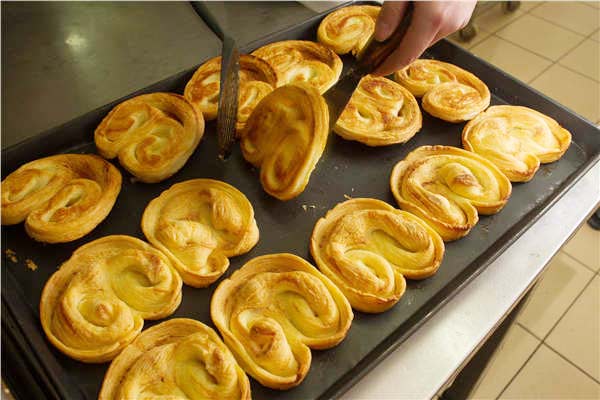
Butterfly-shaped, sugar-sprinkled cookies are widely enjoyed in Shanghai, especially when they come fresh out of the ovens. Gao Erqiang / China Daily
Guidebooks advise sampling Shanghai's "must-tries" like xiaolongbao (soup dumplings), red-braised pork and hairy crabs.
But the city's best-kept open secret is haipai xican, which literally translates as "Hai-style Western fare".
It shows every dimension of the metropolis' culture - down to its cuisine - exists at the intersection of East and West.
It's perhaps the closest you'll find to Western Chinatowns' food in the country, yet is its own distinctive group - a melting pot of ancient indigenous dishes with a dash of French, Italian and German influence.
It's considered fine dining and often savored during important or romantic occasions.
"It's a kind of Western cuisine that you can use chopsticks to eat, even though most people wouldn't," local food writer Kong Mingzhu explains.
Haipai staples include potato salad, fried pork chops and borsch.
These three dishes are used as the litmus test to determine if a cook has mastered local culinary arts.
Yet all these are different from how they're classically prepared in their countries of origin.
The potato salad, for instance, lacks the medley of other vegetables the Moscow original contains. Potatoes and processed ham are cubed and mixed with a sauce made from egg yolk and cooking oil.
Fried pork chops remain truer to the Vienna cutlet from which it's derived. The lip-puckering spicy soy sauce is Shanghai's addition.
The dialectical pronunciation of borsch, luosong - the soup believed to have originated from Ukraine - is homophonic with the Chinese word for Russian, the nationality who brought it to the city.
Beetroot wasn't grown in China when borsch arrived, so it instead features an assortment of veggies and sausage slices in a tomato broth.
Adaptation according to available ingredients is the hallmark of haipai, says retired Red House chef Hou Genquan.
Even baking includes a mix of culturally influences.
A butterfly-shaped, sugar-sprinkled pastry is widely enjoyed during afternoon tea and creates long lines at stores like Deda and Park Hotel every afternoon, when it comes fresh out of the ovens.
Visitors to the city should of course try its iconic dishes - and save room for a helping of haipai.


















































